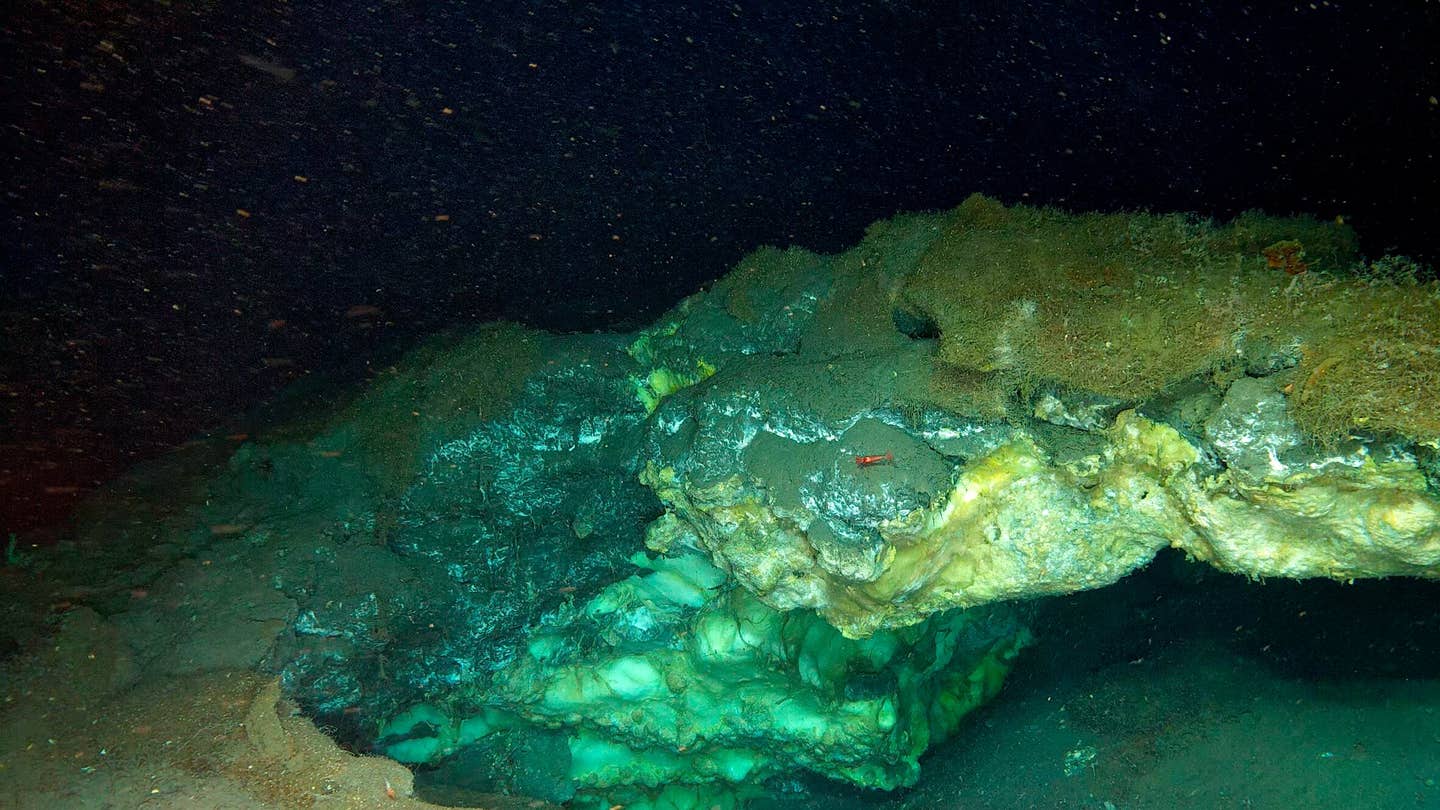New model reveals how supermassive stars shaped the early universe
New research shows extremely massive stars shaped the chemistry of ancient globular clusters and early galaxies.

 Edited By: Joshua Shavit
Edited By: Joshua Shavit

A new model suggests colossal early-universe stars shaped the chemistry of ancient star clusters and influenced the rise of young galaxies. (CREDIT: National Astronomical Observatories of China)
Long ago, before galaxies formed into shapes we are familiar with today and before planets formed, the earliest stars ignited the young cosmic clouds. If you stood inside one of those ancient nurseries, you would be enveloped in the intense heat of newborn stars and witness turbulent gas that swirled like storm clouds. You would have also felt something that was far stranger next to you, something far larger than anything that shines today.
New research now suggests that some of those first and largest stars, each thousands of times the mass of the Sun, spent brief but powerful lives at the center of the first great star clusters. Their relatively short lives might be the next piece of the puzzle regarding certain chemical fingerprints that astronomers have referenced for decades.
The work by ICREA researcher Mark Gieles with the University of Barcelona’s Institute of Cosmos Sciences is published in the journal Monthly Notices of the Royal Astronomical Society.
A Cosmic Puzzle Hidden in Ancient Light
Globular clusters surround most galaxies like ancient glowing fossils. These dense, spherical collections of stars are more than 10 billion years old, containing hundreds of thousands of suns tightly packed. Because they formed so early, they can serve as an approximation to a time capsule for the universe.
But globular clusters have never behaved like simple relics. Their stars exhibited uncommon chemical patterns that do not match the smooth, predictable mixtures astronomers are used to seeing. Some stars would have high amounts of helium or nitrogen, others would show isolated increases of Al or Na. Some would experience a drop in magnesium. The odd combination of chemicals indicates that certain stars might have formed from gas subjected to extreme heating.
For many years, researchers had sought explanations for how such hot processed material was incorporated into the material for new stars. Explanations varied from fast-spinning massive stars interacting with one another to pollution from intermediate-mass stars. Some even suggested giant stars much larger than any we had ever seen. None of these explanations could explain all of the observed evidence or match the A's that had been observed in various clusters.
A New Class of Extremely Massive Stars
This new model takes a daring turn and considers stars so large that they seem completely fantastical. These Extremely Massive Stars or EMSs would have a mass that is between a thousand and ten thousand times the mass of the Sun. It may be hard for you to envision a star of this size, which a star in these early environmental settings, would shine extremely bright and gain gas at extraordinary rates.
The team developed their model from a concept of star formation known as the Inertial Inflow Model. The Inertial Inflow Model describes how turbulent gas in young clouds streams inward toward growing stars from external pressures. Stars not only form, but also continuously grow by engulfing new material being supplied from the very rapid flows of gas. The more gas there is in the surrounding cloud, the larger its largest star can be.
That concept gives rise to an interesting conclusion. In a cloud weighing approximately six million solar masses, the largest newborn star could reach around fifteen thousand solar masses. This massive star could form over around one to two million years, a short but significant moment in cosmic time.
Winds Strong Enough to Alter a Cluster
Even while growing, an EMS emits powerful stellar winds. These winds are releasing enriched material formed by high-temperature nuclear fusion within the star. The study shows that the wind from a single EMS can eject material at a rate of at least one-hundredth of a solar mass every year. Well, that does not sound like much, but over hundreds of thousands of years, that is plenty to change the chemistry of the entire cloud.
As this hot, enriched wind mixes with pristine gas, new, smaller stars continue to form, and when you look at these stars today, you see the chemical imprint of that mixture, recorded in their light. Increases in helium just above normal expectations. Strong changes in magnesium and aluminum in clusters with relatively low heavy element content. Increasing fractions of enriched stars in the largest clusters.
The model captures these patterns extremely well. It is even consistent with how the strength of the chemical change relates to the size, age, and metallicity of the different clusters.
Connecting Cluster Formation to Early Galaxies
The work reaches well beyond the study of ancient clusters of stars. Young galaxies in the early universe were filled with dense gas, creating the perfect environment for EMS to form. The James Webb Space Telescope has observed nitrogen-rich galaxies in that epoch, and clusters containing EMS could naturally account for those chemical signatures.
Paolo Padoan, a coauthor from Dartmouth College and ICCUB, says the idea has been a perfect match with what JWST is now seeing. He thinks that the very massive stars may have influenced the first galaxies by illuminating them with bright light and heavy elements.
If EMSs did exist, they may have also collapsed into intermediate-mass black holes, which are more than a hundred solar masses and represent a transitional mass range where black holes are typically not confirmed. These black holes would create a connection between regular black holes and supermassive black holes that anchor galaxies. Some could create signals of gravitational waves that could be detected today.
Questions Still to be Answered
The new model doesn't answer every question. Astronomers have never observed an EMS directly. They are very short-lived stars, and therefore hard to capture, even within galaxies undergoing intense star formation at great distances. There is still uncertainty about the precise physics of the winds. Also, researchers need to determine whether all globular clusters were formed through the same methodology or whether some were created via a different process.
Nevertheless, this research provides a clear and well-reasoned explanation of these questions, and one that is now on the table. It brings together star formation, cluster evolution, chemistry, and black holes into the same cohesive story. This is also timely with new telescopes that can test the predictions.
Practical Impacts of the Research
This model serves as a pathway to understanding how the first star clusters evolved and how they ended up with distinguishable characteristics in their stars’ chemical composition. It now appears that EMSs may have chemically influenced galaxies, which are now also likely to contain intermediate-mass black holes.
With this model in mind, astronomers can now search for black holes that are very rare and avoid some pitfalls when interpreting the JWST observations of the young galaxies. It could also inform and expand understanding of the evolution of star clusters.
If the ideas are validated, it may lead to a paradigm shift in the way astronomers study observations from the early universe and the role of massive stars in shaping the history of the universe.
Research findings are available online in the journal Monthly Notices of the Royal Astronomical Society.
Related Stories
- ALMA detector reveals how the universe builds its largest and brightest stars
- Black hole stars: Giant stars may hide black holes at their core
- Astronomers discover massive bubble around dying star
Like these kind of feel good stories? Get The Brighter Side of News' newsletter.
Joseph Shavit
Science News Writer, Editor-At-Large and Publisher
Joseph Shavit, based in Los Angeles, is a seasoned science journalist, editor and co-founder of The Brighter Side of News, where he transforms complex discoveries into clear, engaging stories for general readers. With experience at major media groups like Times Mirror and Tribune, he writes with both authority and curiosity. His work spans astronomy, physics, quantum mechanics, climate change, artificial intelligence, health, and medicine. Known for linking breakthroughs to real-world markets, he highlights how research transitions into products and industries that shape daily life.



